PEKK-A-CF20
AUD$1,340.00
PEKK-A-CF20 (PolyEtherKetoneKetone) is made possible using PEKK (60/40 copolymer) and 20% high modulus chopped carbon fiber. This combination makes for one of the highest-performance polymer compounds in the world. A leading material in the PAEK family, PEKK has exceptionally good mechanical, thermal, and chemical resistance properties. It is also not only substantially easier to print than PEEK. PEKK products have a lower melt temperature as well as a lower rate and degree of crystallinity than PEEK, which aids in the remarkable ease of printing.
PEKK-A-CF20 (PolyEtherKetoneKetone) is made possible using PEKK (60/40 copolymer) and 20% high modulus chopped carbon fiber. This combination makes for one of the highest-performance polymer compounds in the world. A leading material in the PAEK family, PEKK has exceptionally good mechanical, thermal, and chemical resistance properties. It is also not only substantially easier to print than PEEK. PEKK products have a lower melt temperature as well as a lower rate and degree of crystallinity than PEEK, which aids in the remarkable ease of printing.
Benefits of PEKK-A-CF20 Includes:
• Substantially easier to 3D print than PEEK
• Wide processing window from 345-375°C
• Tg of 160°C, HDT of 150°C, and a Tm of 305°C
• Inherently flame resistant (UL94 V-0)
• Low smoke generation
• Outstanding mechanical, thermal, and chemical resistances
• CUT of 260C if Annealed to the crystalline state
Typical PEKK-A-CF20 Applications Include:
• Seals, Gears, Bushings, Bearings, Pump, and Compressor Components
• Industries Served: Auto, Aerospace, Defense, Semi-conductor, Oil & Gas
Filament Specifications:
• 1.75mm +/- 0.05mm in diameter

Recommended Print Settings:
• Extruder Temps: 345 – 375°C
• Bed Temps: 125 – 140°C
• Bed Prep: Rough Borosilicate Glass with PVP gluestick, or High temp carbon fiber sheet plus PVP glue stick, we also recommend the Vision Miner Nano Polymer
• Nozzle: We strongly recommend a 0.4mm orifice or larger using one of our Carbide nozzles
• Layer Height: Ideal layer height is 60% of nozzle diameter. We do not recommend printing layers below 0.25mm with Carbon fiber grades. Lower than 0.25mm may create too much back pressure in the hot end and result in poor feeding, jams, drive gear clicking, and eating a notch into the filament.
• Flow should be set to 106-110% depending on the feeder for a complete filling of the material.
• Drying Instructions: Please dry @110-120°C for 12-24 hours, for the first dry its recommended to dry for at least 24 hours before using, the drying time can be lowered using a vacuum oven and also storing the filament in a degassing chamber when not in use.
• Enclosure temp (if your printer is equipped): 70 – 140°C [hotter is better, up to 140°C]
| Weight | 1 kg |
|---|

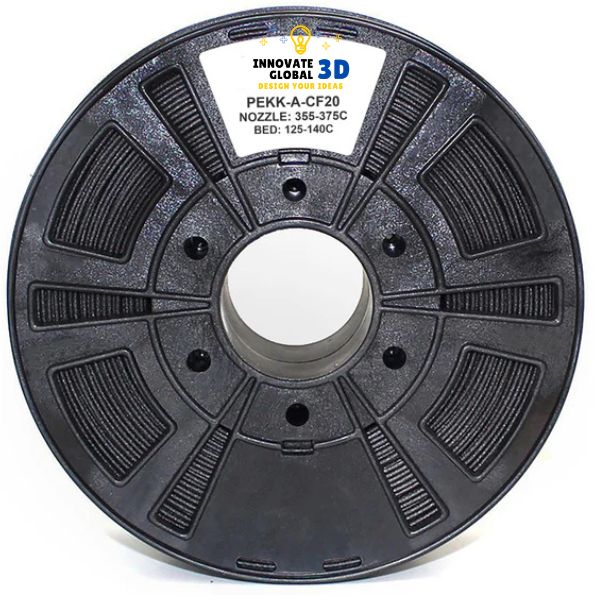
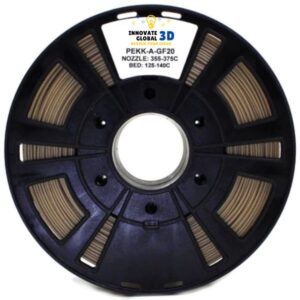
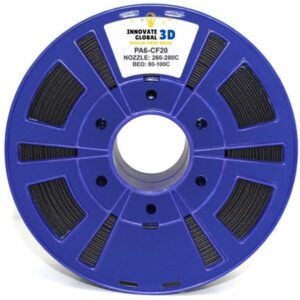
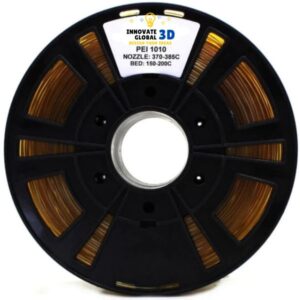

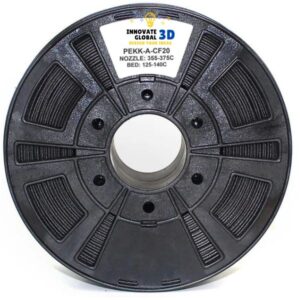
Reviews
There are no reviews yet.